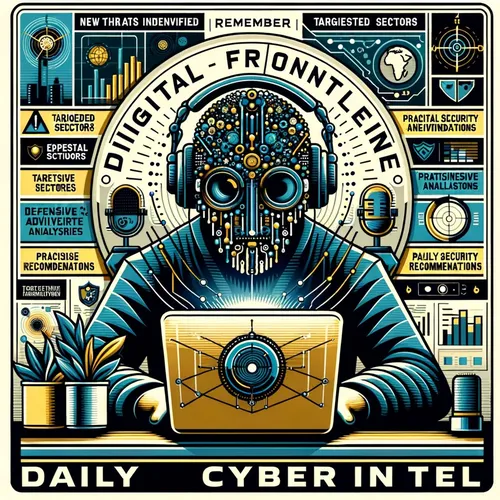Viasat Hacked! China's Cyber Surge: Deepfakes, Defense Cuts, and a Looming Grid Sabotage
- Author
- Quiet. Please
- Published
- Mon 14 Jul 2025
- Episode Link
- https://www.spreaker.com/episode/viasat-hacked-china-s-cyber-surge-deepfakes-defense-cuts-and-a-looming-grid-sabotage--66977500
This is your Digital Frontline: Daily China Cyber Intel podcast.
Hey listeners, Ting here with your Digital Frontline: Daily China Cyber Intel drop. Let’s skip the pleasantries—there’s a lot going down in cyberspace and you want the real intel, not a slow build-up.
Right out of the gate, the biggest headline is the confirmed breach at Viasat, the US-based satellite comms heavyweight. Salt Typhoon, a well-documented China-linked state-sponsored cyber group, snuck in via a compromised network device. Viasat says customer data is safe, but Salt Typhoon’s track record doesn’t exactly leave anyone sleeping easy. These folks specialize in hitting critical telecom: think AT&T, Verizon, even law enforcement wiretap systems and high-level government comms. And as frightening as a rogue satellite signal sounds, Viasat insists the threat is contained for now—still, that’s little comfort when you’re serving military and aviation clients.
Zooming out, the Global Threat Report for 2025 is sounding the alarm over China’s cyber operations. There’s a documented surge in “GenAI-powered” phishing, especially vishing—voice phishing—which jumped a staggering 442% this year. Social engineering attacks are more sophisticated than ever, leveraging deepfake audio and hyper-personalized lures to target US executives and government officials. Cue the collective groan from CISOs nationwide.
Let’s talk targets. The past 24 hours have seen attempts—both confirmed and suspected—on defense contractors, broadband providers, and key federal systems. Infrastructure remains the bullseye, tracking with Congressional warnings that China is “the single greatest risk to American technologies.” Experts warn it’s no longer just data theft; we’re seeing “pre-positioning” for potential sabotage of critical infrastructure, like power grids, telecom switches, and even water systems. Remember the big China Telecom route-hijack a few years back? Those tactics are evolving, getting harder to detect until it’s a five-alarm fire.
As for the feds, the Trump administration is rolling out a whopping $1 billion for “offensive cyber operations” in the Indo-Pacific theatre. Sounds proactive, but here’s the kicker—they’ve also chopped funding for the US’s defensive cyber programs, which leaves a big “uh-oh” for local agencies and hospitals. Senator Ron Wyden is calling foul, pointing out that while our digital sword gets sharper, our shield is stretched thin.
Looking abroad, hacktivist groups like Z-Pentest and BL4CK CYB3R are ramping up ICS attacks on critical infrastructure. While Russia-linked groups lead this charge, the shifting strategies and toolkit upgrades are starting to blur lines between state and nonstate actors—no perimeter feels safe these days.
Practical moves for US businesses? Patch those unsexy Cisco IOS XE devices—Salt Typhoon loves those holes. Turn up your MFA requirements; deepfake vishing means your staff needs constant awareness training. Review your incident response playbook—twice. If you’re handling sensitive comms, audit every vendor’s security posture like it’s your own.
No sugarcoating it: the digital frontline is moving fast, and today’s best defense is a mix of zero-trust, constant vigilance, and a healthy skepticism of “It couldn’t happen to us.”
Thanks for tuning in to Digital Frontline. Subscribe for the latest intel—this has been a Quiet Please production. For more, check out quietplease dot ai.
For more http://www.quietplease.ai
Get the best deals https://amzn.to/3ODvOta
